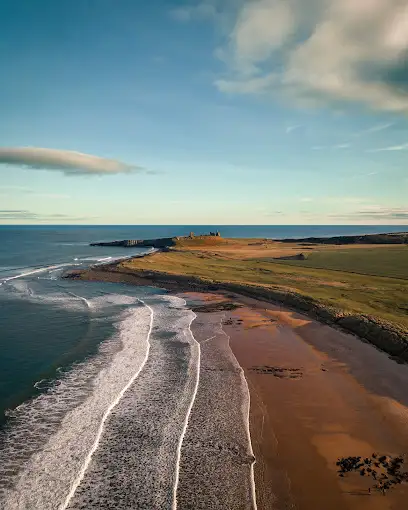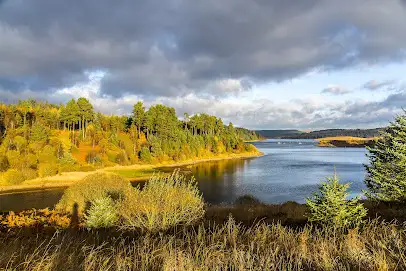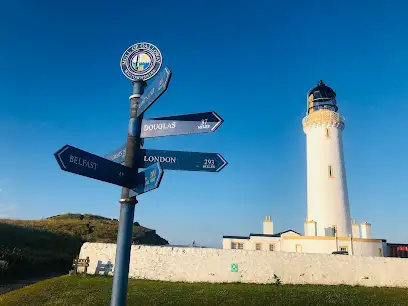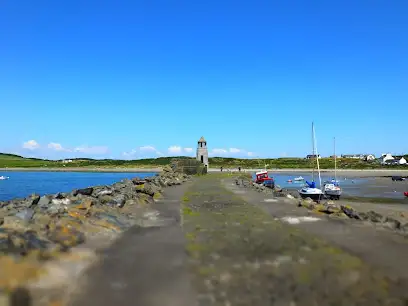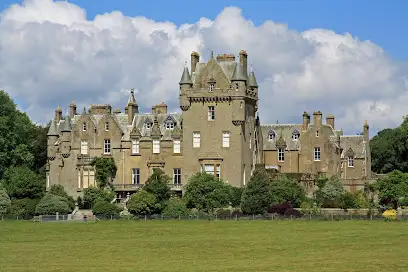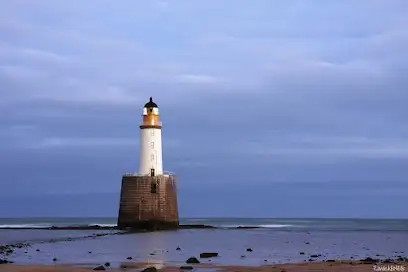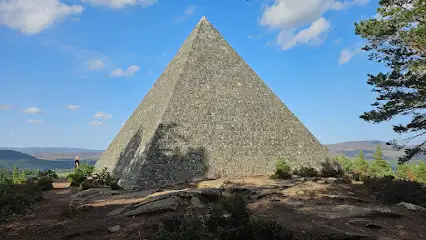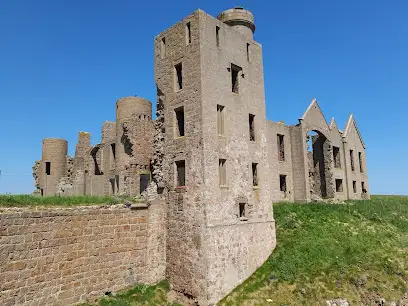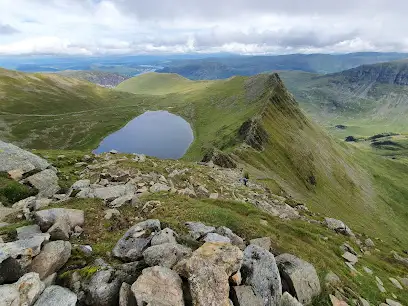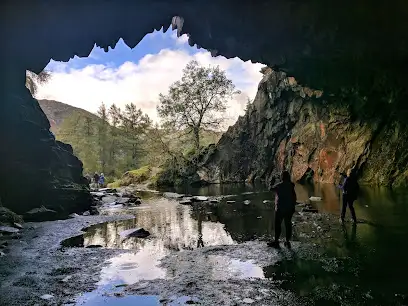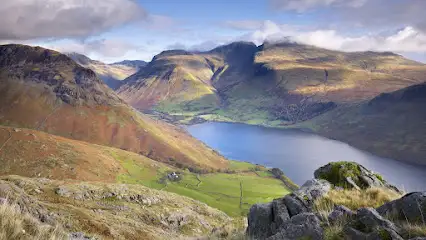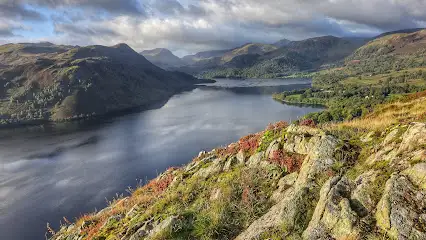Why We Love The North of Spain
- Diverse landscapes: This route offers unparalleled scenery, from the rugged beauty of the Basque coastline to La Rioja’s rolling vineyards.
- Cultural gems: Explore medieval villages, world-class museums, and vibrant cities celebrating Spain’s rich history and traditions.
- Adventure opportunities: Whether it’s hiking coastal cliffs, traversing large stretches of the iconic Way of St. James, surfing epic waves, or savouring pintxos and wine, there’s something for everyone.
North of Spain Itineraries
- Contents
- 1.What is the North Spain Road Trip?
- 2.The North Spain Road Trip Route
- 3.Stage 1: San Sebastian to Bakio
- 4.Stage 2: Bakio to Bilbao
- 5.Stage 3: Bilbao to Santander
- 6.Stage 4: Santander to San Vicente de la Barquera
- 7.Stage 5: San Vicente de la Barquera to Aguilar de Campoo
- 8.Stage 6: Aguilar de Campoo to Burgos
- 9.Stage 7: Burgos to Frías
- 10.Stage 8: Frías to Haro
- 11.Stage 9: Haro to Logroño
- 12.Stage 10: Logroño to Pamplona
- 13.Stage 11: Pamplona to Elizondo
- 14.Frequently asked questions
What is the North Spain Road Trip?
The North Spain Road Trip is a thrilling adventure spanning the Basque Country, Cantabria, Castile and León, and La Rioja. Starting in San Sebastian and ending in Elizondo, this route covers over 800 kilometres of northern Spain’s most spectacular coastal and inland scenery. From vibrant cities like Bilbao and Pamplona to tranquil natural parks and historic towns, it’s the perfect blend of wanderlust and relaxation.
The North Spain Road Trip Route
- Stage 1: San Sebastian to Bakio - Kickstart your adventure with stunning coastal vistas. Visit the quaint fishing villages of Getaria and Zumaia and hike to Gaztelugatxe, a legendary hermitage perched on a rocky islet.
- Stage 2: Bakio to Bilbao - This shorter stage leads to Bilbao, a vibrant cultural hub. Stop at Mundaka for surf vibes before making your way to Bilbao’s old town and iconic Guggenheim Museum.
- Stage 3: Bilbao to Santander - Drive along Cantabria’s coastline to Santander, a city of elegant promenades and breathtaking bay views. En route, stop in Castro Urdiales and Laredo, known for their historic charm and golden beaches.
- Stage 4: Santander to San Vicente de la Barquera - Pass through lush countryside to San Vicente de la Barquera, a seaside town within the Oyambre Nature Reserve, famous for its tranquil beaches and wetlands.
- Stage 5: San Vicente de la Barquera to Aguilar de Campoo - Head inland toward Castile and León. In Comillas, admire Antoni Gaudí's intricate Catalan tiles and signature wrought ironwork before arriving in Aguilar de Campoo, known for its medieval churches and biscuit factories.
- Stage 6: Aguilar de Campoo to Burgos - This part of the route leads you to Burgos, home to a UNESCO-listed Gothic cathedral. Don’t miss the Castle of Burgos and the historic Arco de Santa María.
- Stage 7: Burgos to Frías - Drive to Frías, one of Spain’s smallest and most picturesque medieval towns, where cobblestone streets give way to whimsical stone houses perched on rocky cliffs and a majestic clifftop castle. Don’t miss the ancient Roman bridge spanning the Ebro River, offering breathtaking views of the surrounding countryside.
- Stage 8: Frías to Haro - Venture into Haro, Spain’s wine capital, located in the heart of the La Rioja wine region. Visit the historic Haro Wine Station District, a hub of 19th-century winemaking, and indulge in wine-tasting sessions at the region’s famous bodegas.
- Stage 9: Haro to Logroño - Logroño is a foodie paradise, famous for Calle Laurel, a street lined with pintxo bars. Explore the city’s vibrant atmosphere and cultural landmarks like the Concatedral de Santa María de la Redonda, with its iconic twin towers, and the Mercado de San Blas, where fresh, local produce is sold daily.
- Stage 10: Logroño to Pamplona - This stage takes you to Pamplona, famous for the Running of the Bulls. Wander through serene parks with beautiful gardens and fountains, explore its ancient city walls, and experience the lively atmosphere of the Old Quarter. For history and art enthusiasts, the Museo de Navarra is a must-visit.
- Stage 11: Pamplona to Elizondo - Arriving in Elizondo, the trip's final stop, you'll find this quaint town nestled in the picturesque Baztán Valley. Explore the local markets and savour the final stretch of your scenic drives in Spain, winding through the rolling green hills surrounding the area.
Stage 1: San Sebastian to Bakio
The drive from San Sebastian to Bakio offers a perfect mix of culture, adventure, and stunning coastal views. As you explore the Basque Country by car, consider taking one to two days to fully enjoy its picturesque towns, including Getaria's charming harbour and Zumaia’s breathtaking flysch cliffs. End this stage of the route with a hike to Gaztelugatxe for panoramic views that will leave you in awe.
Top things to do between San Sebastian and Bakio:
- Pintxos in San Sebastian: Start your journey with a classic pintxos crawl through San Sebastian's Old Town. Bars Casa Vergara, Gandarias, and Bar Sport are not to be missed.
- Zumaia’s Flysch Cliffs: Explore the dramatic geological formations featured in Game of Thrones. If you enjoy hiking, the Ruta del Flysch, a stunning coastal trail stretching from Zumaia to Deba, is definitely worth the effort.
- Getaria: Stroll through the endearing harbour town and visit the Cristobal Balenciaga Museum. Then, enjoy some of the best Northern Spain tapas and freshly grilled seafood at the Getaria fishing port.
- Gaztelugatxe: Hike along the long stone bridge to this iconic rock islet, home to a photogenic hermitage, and take in panoramic views of the coast.
Stage 2: Bakio to Bilbao
A short and scenic drive, perfect for surfers and culture lovers alike. Make a stop in Mundaka to experience its renowned surf scene before exploring Bilbao’s avant-garde art at the Guggenheim Museum. This stage balances the Basque coast's seaside charm with Bilbao's urban vibrancy.
Top things to do between Bakio and Bilbao:
- Mundaka: Stop at this famous surf town to watch or ride its world-class waves.
- Bermeo: Explore the traditional Basque fishing village, rich in maritime history, and discover one of the hidden gems of Northern Spain, with stunning marine landscapes, and verdant green mountains.
- Urdaibai Biosphere Reserve: Discover wetlands and nature trails perfect for birdwatching and kayaking.
- Guggenheim Museum Bilbao: Immerse yourself in the avant-garde art and marvel at the iconic architecture by Frank Gehry, one of the best stops on a Basque Country road trip.
- Pintxos in Bilbao City Centre: For an authentic taste of Basque food culture, be sure to try Sorginzulo’s famous squid sandwich (“Bocadillo de Calamares”) and visit La Viña del Ensanche for their delectable braised veal with potato purée.
- Castillo de Butrón: Step back in time at this medieval castle, surrounded by green forests and offering a glimpse into the region’s rich history.
- Camino de Santiago (The Way of St. James): As you journey from Bakio to Bilbao, you can walk coastal parts of the Camino del Norte, the northern route of the Camino de Santiago. For hikers, this is a Spanish cultural experience not to be missed.
Stage 3: Bilbao to Santander
This longer stage takes you along the captivating Cantabria coast. Stroll through the charming streets of Castro Urdiales, explore the historic Old Town of Laredo, and unwind at Santander’s Magdalena Peninsula. This journey weaves centuries of history, coastal beauty, and tranquil beaches into your Cantabria road trip.
Top things to do between Bilbao and Santander:
- Castro Urdiales: Step into history as you visit the striking Gothic Church of Santa María, perched above the town with panoramic sea views. Stroll through the picturesque harbour, lined with colourful fishing boats and lively seafood restaurants, where the allure of this coastal town truly comes alive.
- Laredo: Meander through the winding streets of Laredo’s old town, rich with medieval architecture and vibrant squares. After exploring, unwind on La Salvé Beach, one of Cantabria’s finest, with its golden sands and gentle surf—perfect for a peaceful seaside escape.
- Santander’s Magdalena Peninsula: Enjoy a scenic walk along the peninsula’s dramatic cliffs, where lush greenery meets the sparkling Bay of Biscay. Discover the historic Magdalena Royal Palace, a summer retreat for Spanish royalty, and soak in the stunning beachside views that make this area a local treasure.
- Playa de Oriñón: Take some time out to relax on this tranquil beach, known for its golden sands, clear waters, and dramatic cliffs, a highlight on your road trip along the Cantabrian coast. It’s perfect for a peaceful retreat.
Stage 4: Santander to San Vicente de la Barquera
This stage offers scenic coastal beauty and a tranquil drive perfect for nature lovers. Visit Oyambre Nature Reserve, known for its birdwatching and pristine beaches, and enjoy fresh seafood in San Vicente de la Barquera. It’s a relaxing mix of coastal landscapes and natural charm.
Top things to do between Santander and San Vicente de la Barquera:
- Cueva de Altamira Museum: Explore reproductions of prehistoric cave art near Santillana del Mar.
- Cueva de El Castillo: This UNESCO-listed site near Puente Viesgo features ancient cave paintings dating back over 25,000 years.
- Santillana del Mar: Known as “the town of three lies” (not a saint, not flat, not by the sea), this idyllic medieval village is one of the top destinations in Northern Spain. Don’t miss the stunning views from one of the nearby vantage points, like El Mirador de la Corneja, just a 15-minute drive from Santillana del Mar along the C-131.
- Oyambre Nature Reserve: Marvel at the wetlands, sand dunes, and pristine beaches, where you can also enjoy bird watching opportunities, hiking trails, and the tranquil beauty of the surrounding coastal landscapes.
- Seafood in San Vicente de la Barquera’s Sotavento: Enjoy freshly caught fish and seafood at this charming, family-run seaside restaurant with stunning views of the coast.
- Playa Virgen del Mar: Unwind at this peaceful beach, surrounded by rugged cliffs and crystal-clear waters, perfect for swimming and sunbathing.
Stage 5: San Vicente de la Barquera to Aguilar de Campoo
Venture inland for a refreshing change of scenery. In Comillas, admire its striking modernist landmarks, then step back in time with a visit to the historic sites of Aguilar de Campoo. This stage offers a rich mix of natural beauty, cultural heritage, and architectural wonders, highlighting the diverse landscapes of northern Spain.
Top things to do between San Vicente de la Barquera and Aguilar de Campoo:
- Comillas: Admire the architectural gems of Comillas, including Gaudí’s unique El Capricho villa and the impressive Palacio de Sobrellano, showcasing the town's rich history and modernist influence.
- Cueva El Soplao: Explore this fascinating cave system known for its stunning stalactites and stalagmites. It offers a glimpse into the region’s remarkable geological formations.
- Reinosa: Stop for a coffee in this enchanting mountain town, where you can enjoy its calm atmosphere and views of the surrounding peaks. Then, visit the town’s microbrewery, Cervezas Ibre, to sample locally crafted beers and learn about the brewing process.
- Aguilar de Campoo’s Biscuit Factory: Sample local delicacies at Aguilar de Campoo’s Biscuit Factory, where you can taste traditional treats and discover the town’s biscuit-making heritage.
Stage 6: Aguilar de Campoo to Burgos
This inland journey takes you deep into Castile and León’s rich history. Start in Aguilar de Campoo, known for its medieval churches and biscuit heritage, then drive through the picturesque Montaña Palentina Natural Park. Arriving in Burgos, you’ll be captivated by the majestic Burgos Cathedral, a UNESCO World Heritage Site, along with other historical gems like Monasterio de las Huelgas and the lively Plaza Mayor.
Top things to do between Aguilar de Campoo and Burgos:
- Montaña Palentina Natural Park: Explore the rugged beauty of Montaña Palentina Natural Park, where you can enjoy scenic hiking trails, spot native wildlife like deer and wild boar, and take in panoramic views of the surrounding mountains and valleys. The park is a perfect place to connect with nature and experience the region's diverse ecosystems.
- Church of San Juan de Baños: Visit the Church of San Juan de Baños, one of Spain's oldest and best-preserved Visigothic churches. This architectural gem dates back to the 7th century. It offers a fascinating glimpse into the country’s early Christian history and its distinct Visigothic design.
- Burgos Cathedral: Marvel at the Burgos Cathedral, a stunning example of Gothic architecture and a UNESCO World Heritage Site. Admire the intricate details of its soaring spires, majestic interior, and famous altarpiece, and take time to appreciate the cathedral's long history as a spiritual and cultural centerpiece of the city.
- El Cid’s Trail: Walk parts of El Cid’s Trail, a historic route that traces the journey of the legendary Spanish hero, El Cid. As one of the key cultural stops on a Northern Spain road trip, this route offers insight into medieval Spain, with key landmarks and monuments related to the life and exploits of the famous warrior, providing a deeper connection to the country’s rich historical narrative.
- Orbaneja del Castillo: Discover the stunning Orbaneja del Castillo, a picturesque hamlet known for its dramatic waterfall. As the water cascades down the cliffs, Orbaneja del Castillo, with its traditional stone houses, offers a perfect spot to relax and take in the beauty of this natural wonder.
Stage 7: Burgos to Frías
Step back in time on this short drive into Spain’s medieval past. Wander through the narrow streets of Frías, where houses cling to rocky cliffs beneath a 12th-century castle. For any history buffs and and nature enthusiasts, stop at Tobera to admire its ancient bridges and waterfalls.
Top things to do between Burgos and Frías:
- Cascada de Tobera: Take a scenic walk through the village of Tobera, where you’ll find a series of striking waterfalls cascading through lush greenery. Follow the trails that wind past ancient stone bridges, offering tranquil views of the surrounding natural beauty, the perfect stop for nature lovers and photography enthusiasts.
- Castle of Frías: Visit this 12th-century fortress perched dramatically on a rocky outcrop. Climb to the top for panoramic views of the valley below, where you can see the surrounding hills and the meandering Ebro River.
- Medieval Streets of Frías: Stroll through Frías, one of Spain’s smallest and secluded cities, where time seems to stand still. Wander the narrow cobblestone streets lined with quaint, stone houses that cling to the steep cliffs beneath the castle.
- Views of the Ebro River: As you journey through the area, take in breathtaking views of the Ebro River, which flows through the valley, offering a tranquil and stunning backdrop. The river’s winding course through the landscape provides a serene contrast to the rugged cliffs and historic structures, adding to the stage’s natural beauty.
Stage 8: Frías to Haro
A gateway into La Rioja’s renowned wine country. Stop in Briones to visit the Vivanco Museum of Wine Culture, then continue on to Haro for wine tastings at renowned bodegas like Muga or Lopez de Heredia. Stroll through the Haro Wine Station district to explore the heart of Spain’s most celebrated wine region.
Top things to do between Frías and Haro:
- Haro Wine Station District: Step back in time to this historic district where some of Rioja’s most prestigious wineries, or bodegas, are located. Stroll alongside 19th-century buildings near the old train station, which was key in exporting Rioja wine.
- Bodegas La Rioja Alta: Visit one of Rioja’s most iconic wineries, known for its meticulously crafted wines that combine tradition with modern innovation. Tour the winery’s cellars to learn about its winemaking philosophy and taste its celebrated vintages.
- Vivanco Museum of Wine Culture: Explore this fascinating museum in the village of Briones, offering an immersive journey into the history and art of winemaking.
Stage 9: Haro to Logroño
A short but flavour-packed drive into La Rioja’s capital. Sample culinary delights on Calle Laurel, known for its pintxos bars, visit the Concatedral de Santa María de la Redonda and explore the Parque del Ebro for a relaxing riverside walk. This stage is perfect for foodies and those looking to immerse themselves in vibrant local culture.
Top things to do between Haro and Logroño:
- Calles Laurel and San Juan: Logrono is one of the top destinations in Northern Spain for pintxos, offering a vibrant food scene and unforgettable culinary experiences. While Calle Laurel is famous for its bustling atmosphere and traditional pintxo offerings, Calle San Juan offers a quieter, more local experience with creative pairings of small bites and wine.
- Concatedral de Santa María de la Redonda: Marvel at the intricate Baroque facade of this iconic cathedral in Logroño’s historic centre. Step inside to admire its impressive twin towers and renowned artworks, including a piece attributed to Michelangelo.
- Parque del Ebro: Unwind in this peaceful park with a serene stroll along the Ebro River. Enjoy picturesque views of the city’s skyline, shaded walking paths, and picnic spots ideal for a relaxing afternoon.
- Bodegas Campo Viejo: Visit one of Rioja’s most renowned wineries, just outside Logroño. Explore its modern winemaking facilities, learn about its sustainable practices, and savour a guided tasting of its celebrated wines, including the flagship Campo Viejo Reserva.
- Mercado de San Blas: Immerse yourself in local culture at this traditional market, where you’ll find fresh produce, artisanal goods, and regional specialties. It’s an ideal spot to pick up ingredients for a picnic or soak in the lively atmosphere.
Stage 10: Logroño to Pamplona
Cross into Navarre for a delightful mix of history and nature. On the way, visit Puente La Reina, a historic town with a Romanesque bridge on the Camino de Santiago, then explore Pamplona, known for its historic walls, Plaza del Castillo, and the Running of the Bulls route (off-season, of course!). This stage offers a unique blend of pilgrim towns and Pamplona's historic charm.
Top things to do between Logroño and Pamplona:
- Puente La Reina: Stroll across this magnificent Romanesque bridge, an iconic landmark on the Camino de Santiago. Its arches frame panoramic views of the Arga River and serve as a reminder of Pamplona’s historical connection to the pilgrimage route.
- Pamplona’s Walls: Discover the city’s ancient fortifications, which offer a glimpse into its strategic importance throughout history. Walk along the walls for panoramic views of the surrounding landscape and explore bastions and gates that have stood for centuries.
- Plaza del Castillo: Relax in the heart of Pamplona at this bustling square. Lined with delightful cafés and terraces, this square is the perfect spot to enjoy a coffee or a pintxo while soaking in the lively atmosphere and people-watching.
- Historic Centre: Wander through Pamplona’s narrow cobblestone streets to uncover quaint cafés, local boutiques, and hidden corners. Don’t miss landmarks like the Catedral de Santa María la Real, a stunning Gothic cathedral with a peaceful cloister and an ornate interior.
- Camino de Santiago: The Camino Francés, one of the most famous routes of the Camino de Santiago, passes through this area. Hikers can follow sections of this well-travelled route steeped in history, offering a serene yet challenging journey.
Stage 11: Pamplona to Elizondo
End your journey in the lush and tranquil Baztán Valley. Stop in Urdax or Zugarramurdi to explore mystical caves, then arrive in Elizondo for a peaceful end to your trip. Visit Palacio de Arizkunenea and the lively weekly market to enjoy local flavours. It’s a serene finale to one of the best road trips in Northern Spain, filled with stunning villages and breathtaking mountain vistas.
Top things to do between Pamplona and Elizondo:
- Zugarramurdi Caves: Step into the mystical world of Basque folklore by visiting these ancient caves, famous for their ties to witchcraft legends. Explore the cavernous spaces where pagan rituals were said to have taken place, surrounded by a rugged, natural landscape.
- Baztán Valley: Take a scenic drive through this enchanting valley, dotted with verdant pastures, charming stone villages, and traditional Basque farmhouses. The tranquil atmosphere and breathtaking views make it a perfect retreat into nature.
- Mercadillo de Elizondo: Savour the region's flavours at this bustling local market. Sample artisan cheeses, buttery pastries, and other traditional Basque delicacies while mingling with locals and experiencing the valley's vibrant culture.
Frequently asked questions
The best time to take this road trip is between May and September, thanks to warm weather, long days, and ideal conditions for outdoor adventures. Autumn is also a great choice, especially in La Rioja, where vineyards showcase stunning colours.
Plan for at least 10–14 days to fully enjoy the highlights. Shorter trips are possible, but you may miss some key sights and experiences along the way.
Yes, the North Spain Road Trip is ideal for camper vans, with many campsites along the way. Coastal areas like San Sebastian and Cantabria offer excellent camping spots; inland, you’ll find well-equipped facilities near major attractions.
While wild camping is not officially permitted in Spain, plenty of designated campsites and camper stops (called ‘áreas de autocaravanas’) cater to road trippers. Respect local regulations to ensure a smooth journey.
The best time is May to September, offering warm weather and long daylight hours. Autumn is also ideal for La Rioja’s wine harvest season, while spring brings vibrant green landscapes and fewer crowds.
To explore the regions properly, a full trip takes 10–14 days. For a more relaxed experience or to enjoy every highlight, plan for 2–3 weeks.
The trip starts in San Sebastian, a Basque city known for its beaches and gastronomy. It finishes in Elizondo, a serene town in Navarre’s Baztán Valley.


